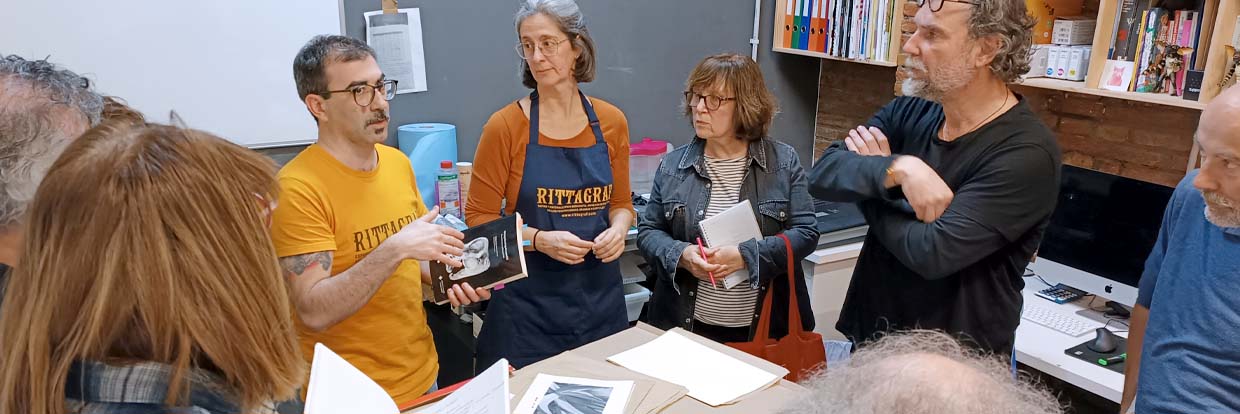
Introduction to Polyester Printmaking: Print Without Chemicals
Each session began with a historical and technical introduction to place this methodology within the context of contemporary graphic practices.
Polyester printmaking is based on the use of polyester plates as the printing matrix, eliminating the need for chemicals, exposure units, or complex photomechanical processes. Starting from digital images, we explored a planographic technique with offset logic, adaptable to personal or home studios.
During the demonstrations, we worked with laser-printable polyester plates, which, once inked with greasy ink, allowed us to print on paper without the need for industrial equipment or toxic substances.
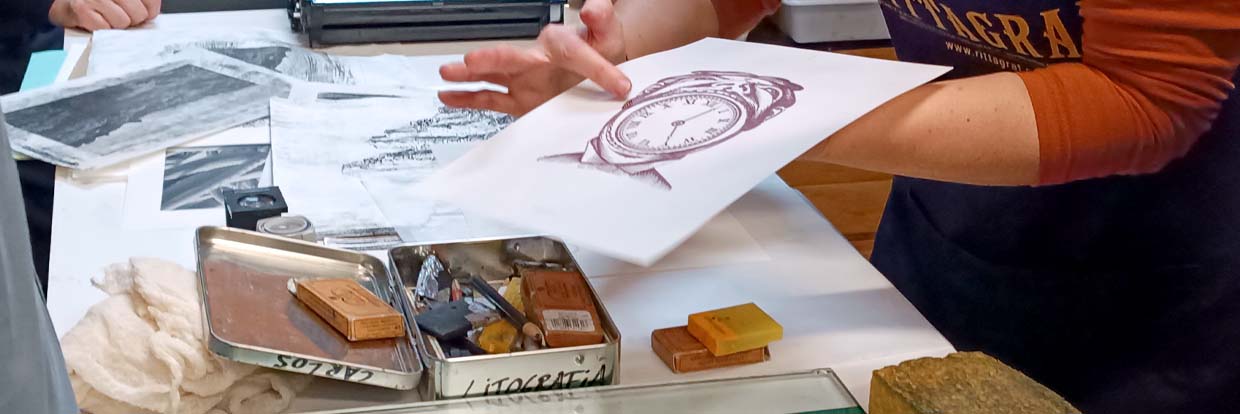

Pen Line Images and Continuous Tone: Different Challenges, Different Solutions
Throughout the sessions, we worked with a wide variety of imagery and challenges:
From pen and line drawings, which require careful inking to maintain detail, to continuous tone images, where controlling the humidity, ink density, and pressure is crucial.
Each type of image required specific technical adjustments. Together, we explored strategies to balance water and ink, achieving optimal results for both high-contrast vector images and photographic tonalities.
The versatility of desktop manual printing plates allowed us to test different approaches, enriching the creative process for each participant.
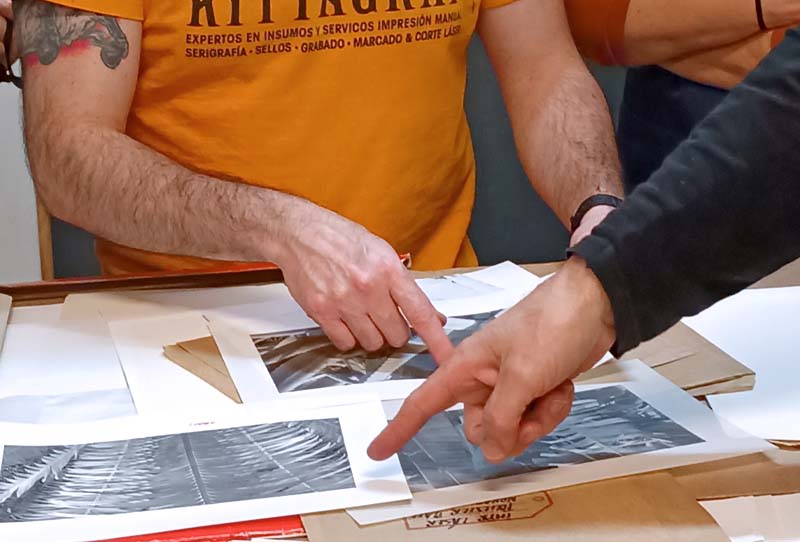

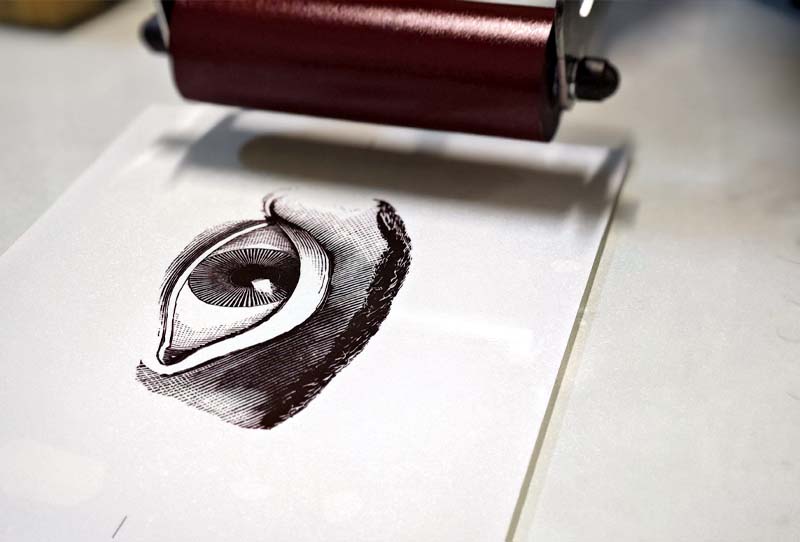

Halftones Curves, and Digital Treatments
One of the key points of the workshop was working with digital halftones and understanding the reproduction curve.
We explained what native screening is and how to create custom halftones for tonal images.
We also emphasized the importance of understanding how a continuous-tone image behaves during the printing process and how to adjust the compensation curve to achieve better results.
This part generated great interest as it connected digital tools with a fully manual printmaking process.
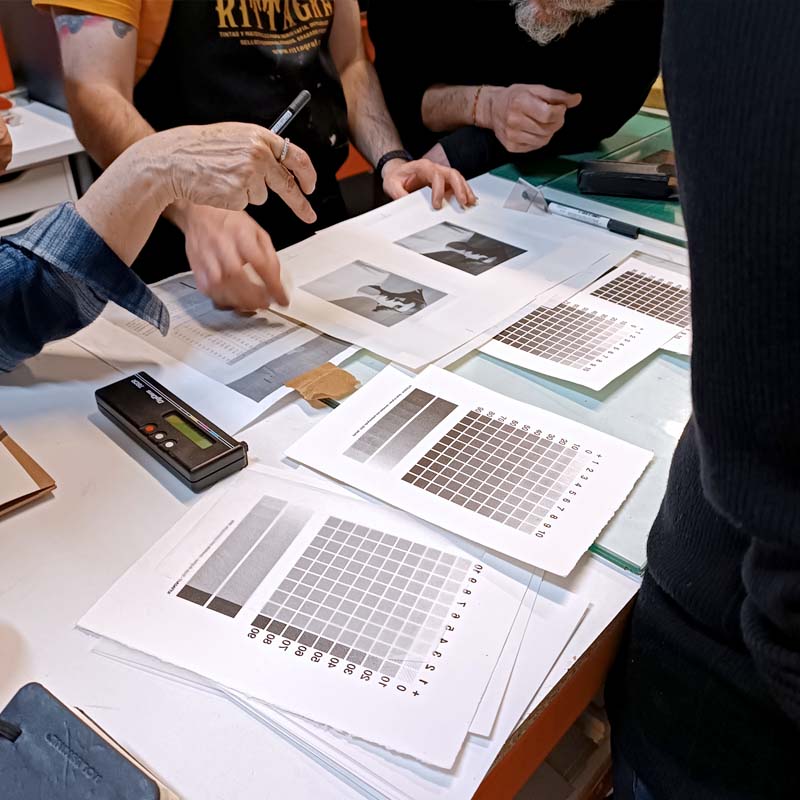

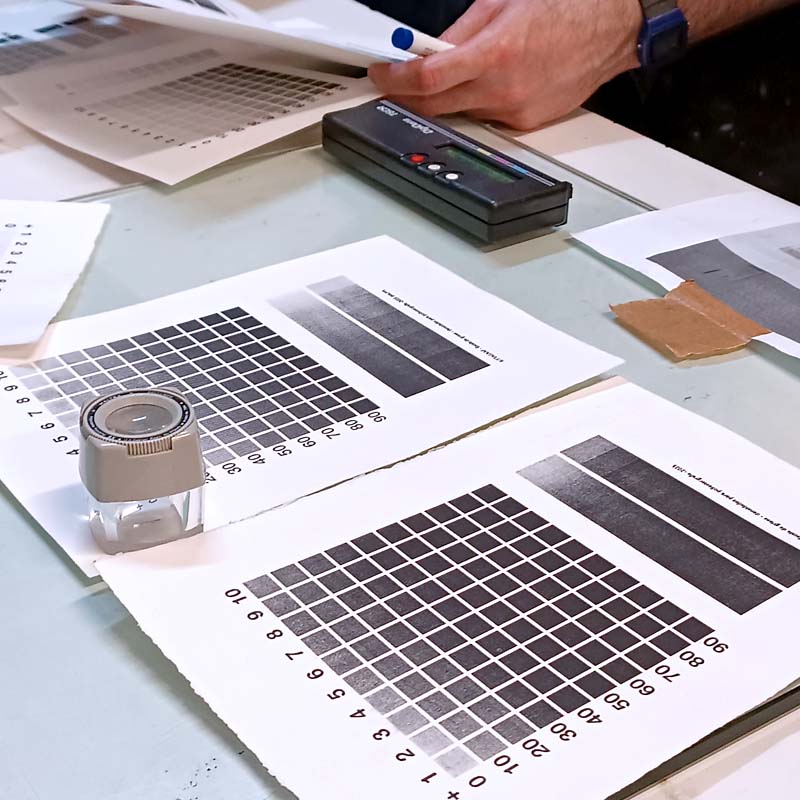

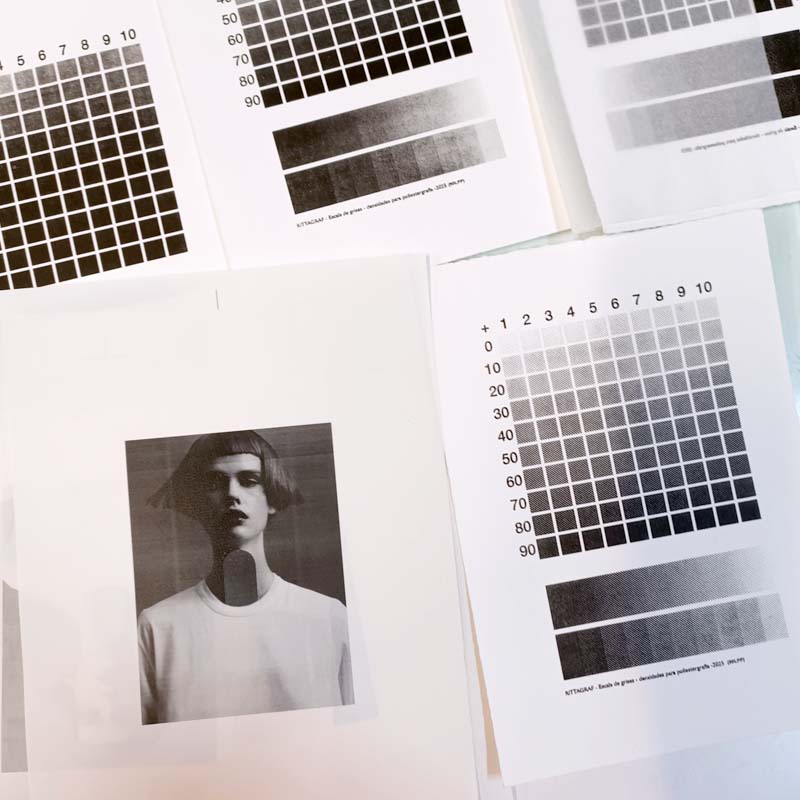

Inks, Papers, and Transfer Methods
The practical part of the workshop allowed us to demonstrate the entire process: plate preparation, dampening, inking, and printing.
We tested different types of greasy inks (offset and lithographic), rubber rollers of varying hardness, and different pressure methods, including the etching press, Japanese baren, American baren, and even the traditional wooden spoon.
We also worked with a variety of papers: from industrial satin-finished papers like coated or offset stock, to traditional printmaking papers (such as RosaEspina, BFK, Incisione), and Japanese or rice papers.
This comparison highlighted how each material and tool affects the final result.
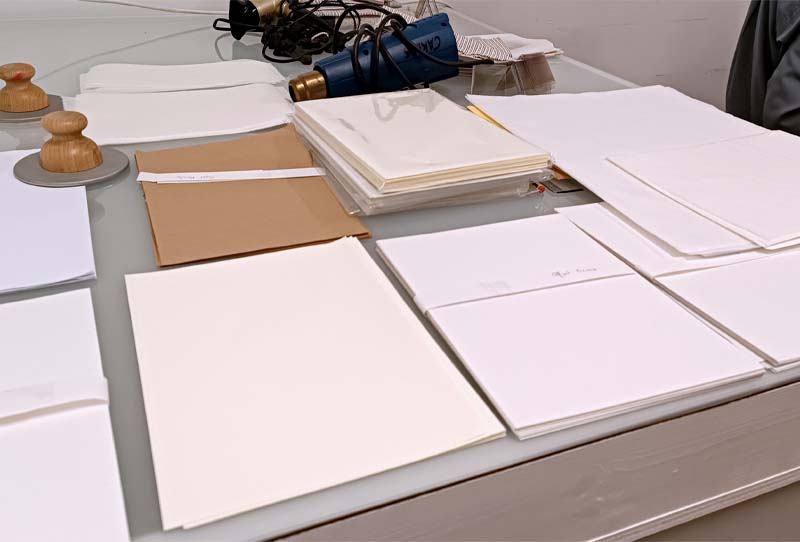

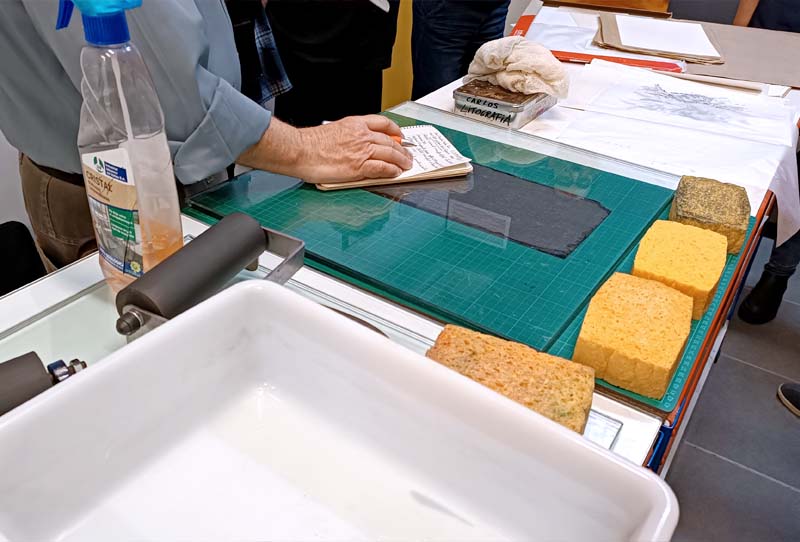

A Shared Rittagraf Experience
The workshops, held in two sessions (Friday afternoon and Saturday morning), brought together a diverse group of participants: visual artists, students, teachers, designers, and enthusiasts of printmaking and the graphic arts.
Both groups shared a participative, open, and generous attitude.
Questions, ideas, and proposals emerged, exploring how to bring this technique into different languages and creative projects.
As is tradition at Rittagraf, we ended each session with a vermouth break, courtesy of Vermut Barbarum, a relaxed moment to continue sharing and connecting.
This workshop was also special for another reason: it marked the first collaboration between Carlos Alguacil and Carol Muñoz, who led the sessions combining a technical and artistic perspective that greatly enriched the overall experience.
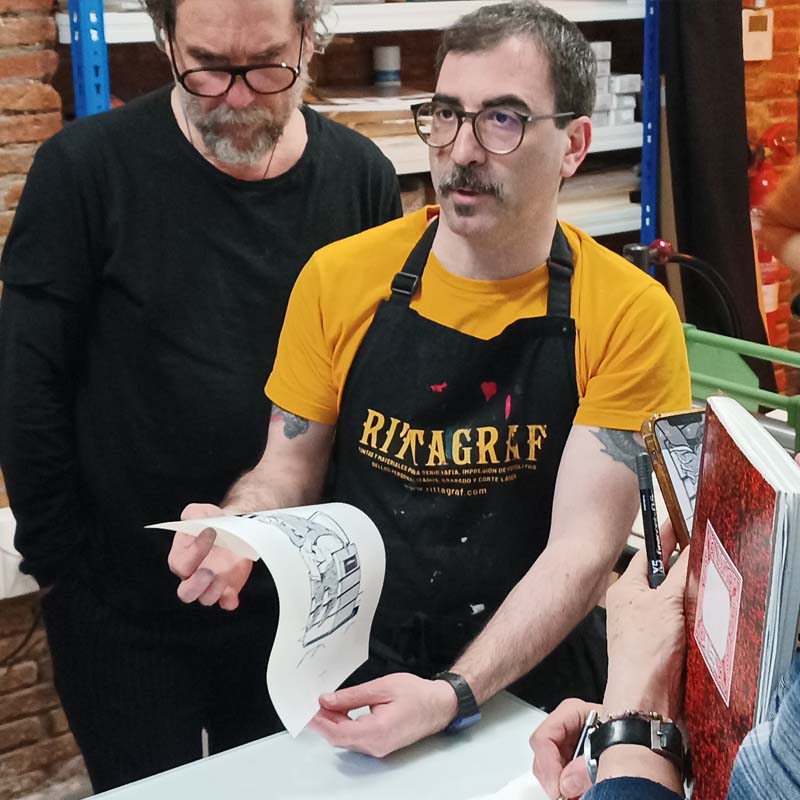

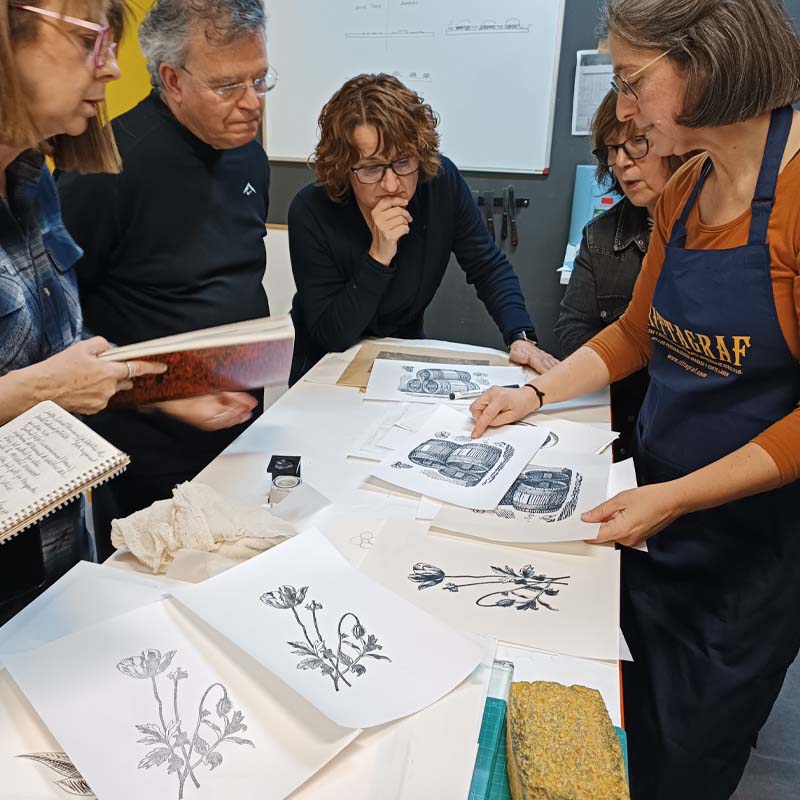

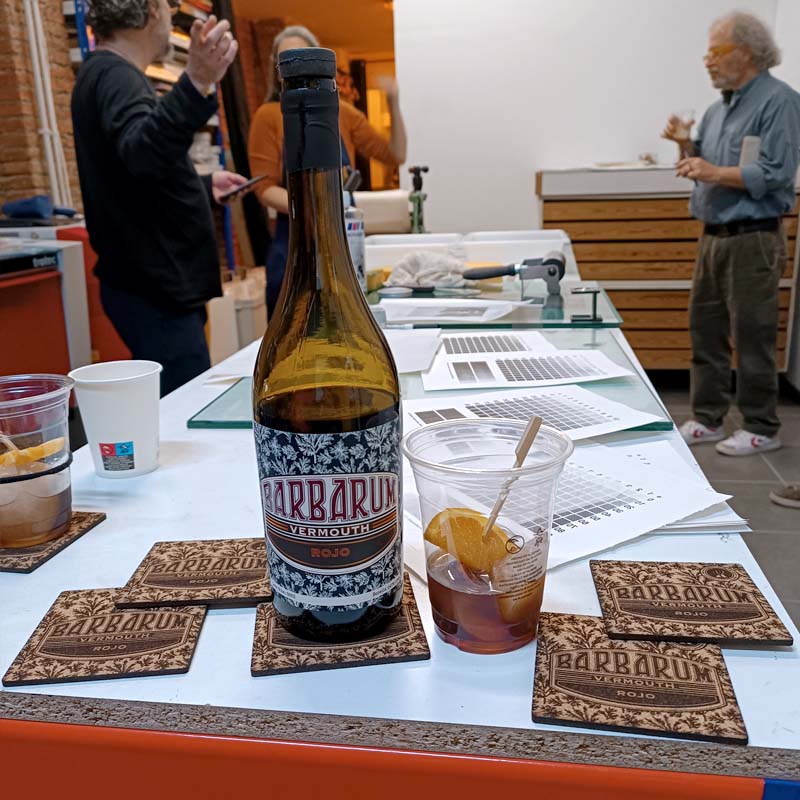

We are very grateful to all the participants for their attention, energy, and genuine interest in contemporary printmaking.
We will be back very soon with new offerings:
polymer stamp workshops, screen printing courses, cyanotype sessions, traditional printmaking, alternative graphic processes, and much more.
If you want to be the first to know, follow us on social media or subscribe to our newsletter.
